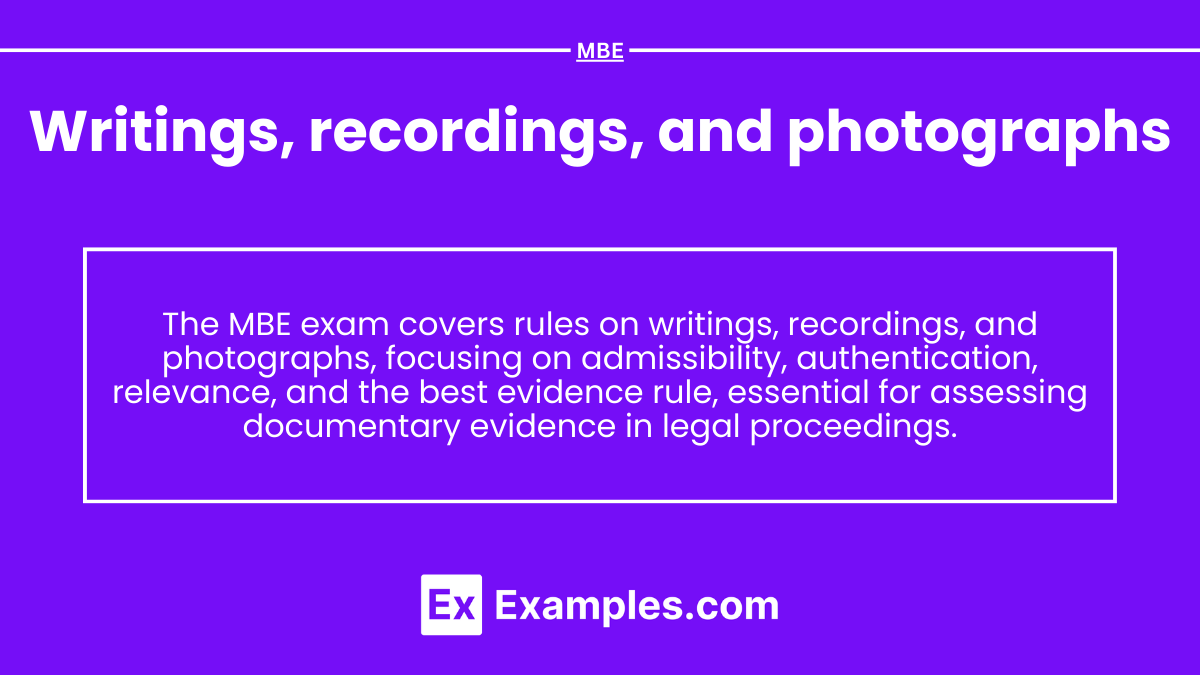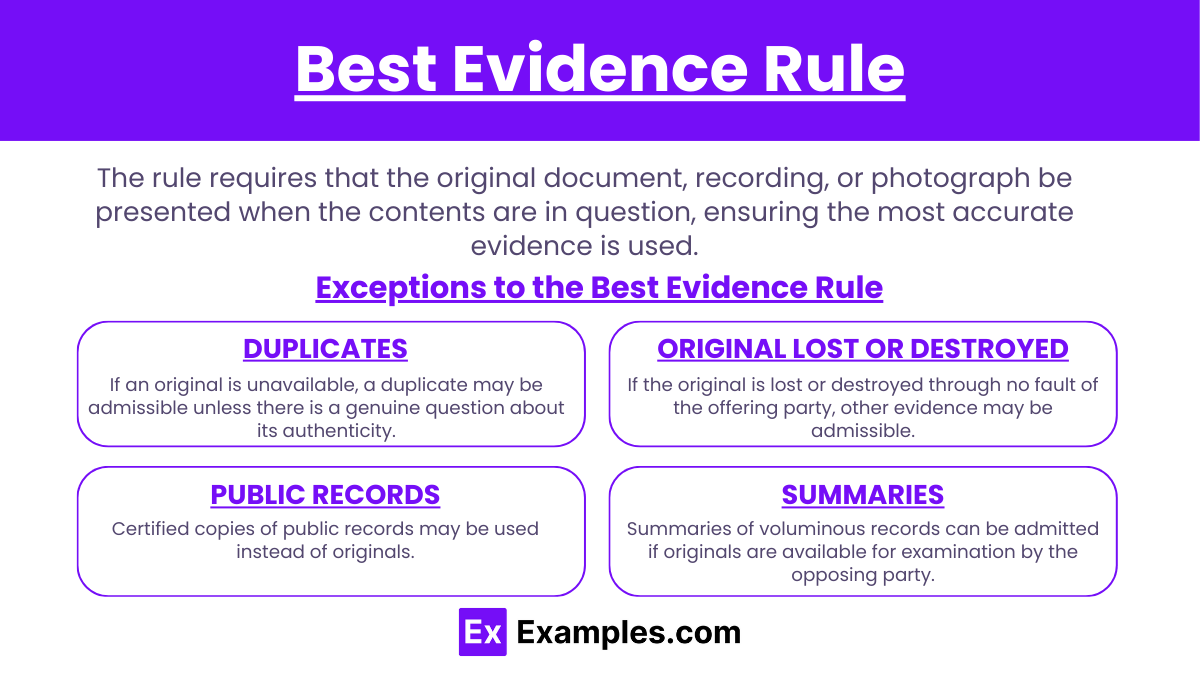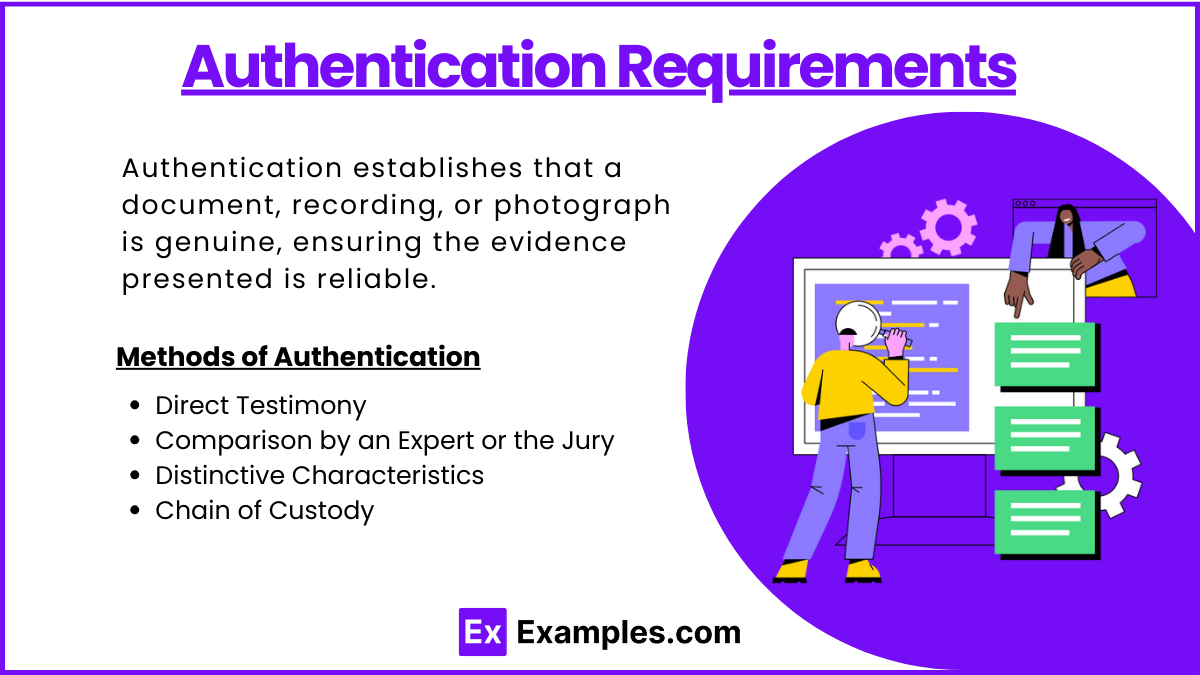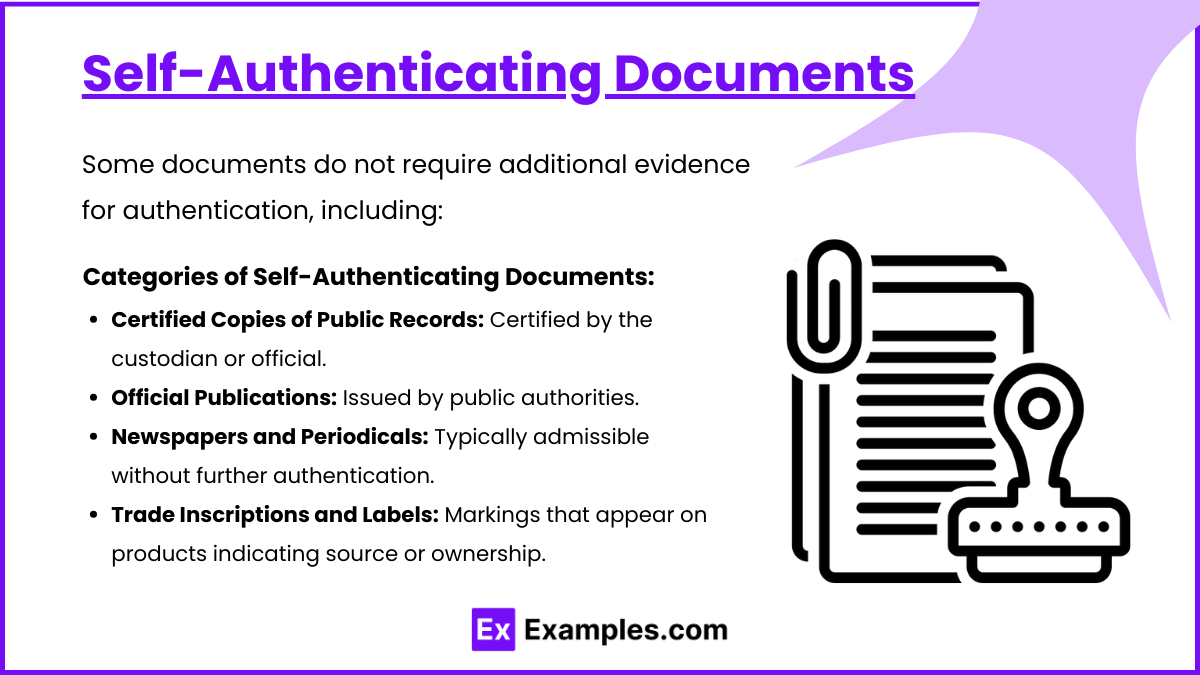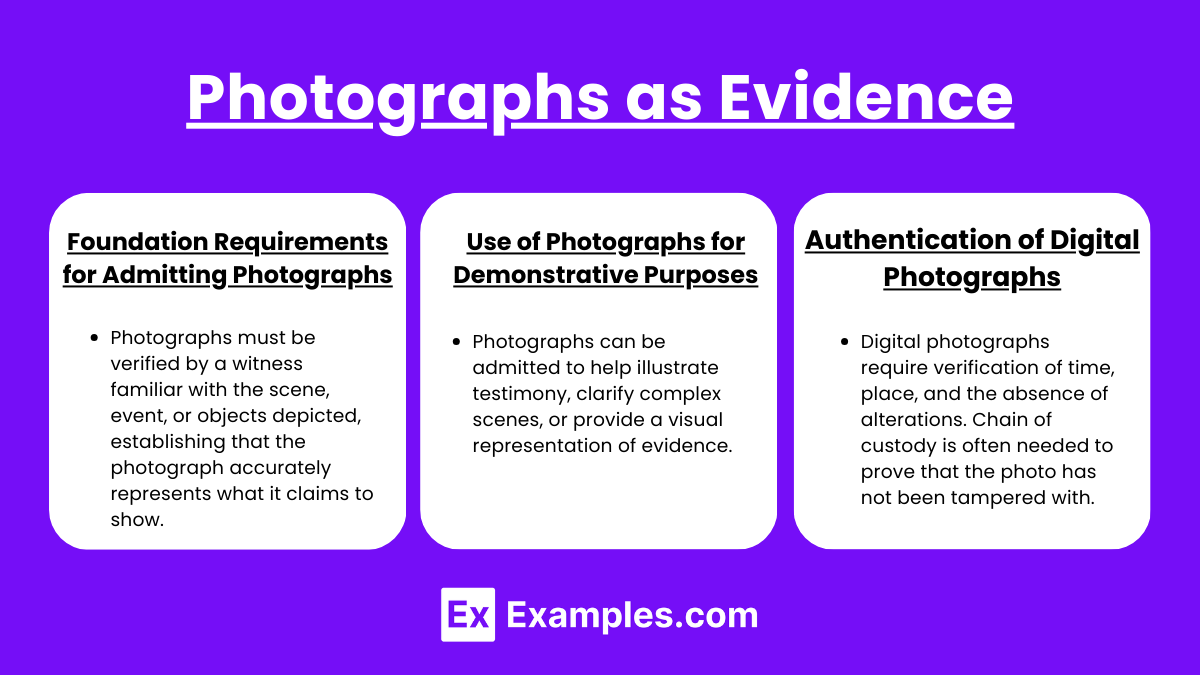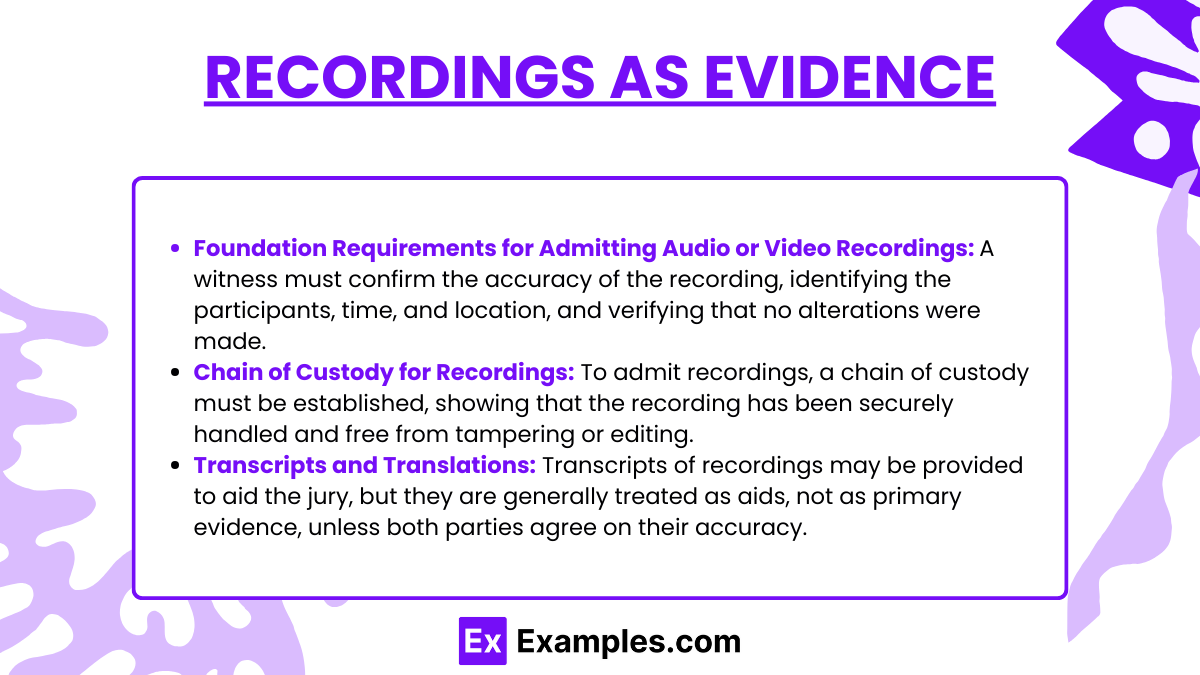In the MBE exam, understanding "Writings, Recordings, and Photographs" is crucial for evaluating how courts handle evidence in various formats. This topic covers the Best Evidence Rule, authentication requirements, and exceptions, providing essential knowledge for analyzing the admissibility of written and visual materials, a key skill for high MBE scores.
Study "Writings, Recordings, and Photographs" for the MBE by understanding the requirements and exceptions for admitting evidence in these forms. Examine the Best Evidence Rule and its applicability, including when originals or duplicates are required and exceptions to these rules. Learn how to authenticate writings, recordings, and photographs, and understand the standards for establishing reliability. Apply this knowledge in practice questions to assess the admissibility of documentary and visual evidence, ensuring proficiency in answering related questions on the MBE.
Best Evidence Rule
Purpose and Applicability of the Best Evidence Rule
The rule requires that the original document, recording, or photograph be presented when the contents are in question, ensuring the most accurate evidence is used.
This rule applies when a party seeks to prove the content of a writing, recording, or photograph in court.
Exceptions to the Best Evidence Rule
Duplicates: If an original is unavailable, a duplicate may be admissible unless there is a genuine question about its authenticity.
Original Lost or Destroyed: If the original is lost or destroyed through no fault of the offering party, other evidence may be admissible.
Public Records: Certified copies of public records may be used instead of originals.
Summaries: Summaries of voluminous records can be admitted if originals are available for examination by the opposing party.
Authentication Requirements
Definition and Importance of Authentication
Authentication establishes that a document, recording, or photograph is genuine, ensuring the evidence presented is reliable.
Methods of Authentication
Direct Testimony: A witness with personal knowledge verifies the authenticity of the document or photograph.
Comparison by an Expert or the Jury: Experts or the jury may compare evidence with authenticated samples to determine genuineness.
Distinctive Characteristics: Unique features of the document or photograph can help establish its authenticity.
Chain of Custody: Especially for recordings and photographs, maintaining an unbroken chain of custody is critical to prevent tampering.
Self-Authenticating Documents
Categories of Self-Authenticating Documents
Some documents do not require additional evidence for authentication, including:Certified Copies of Public Records: Certified by the custodian or official.
Official Publications: Issued by public authorities.
Newspapers and Periodicals: Typically admissible without further authentication.
Trade Inscriptions and Labels: Markings that appear on products indicating source or ownership.
Photographs as Evidence
Foundation Requirements for Admitting Photographs
Photographs must be verified by a witness familiar with the scene, event, or objects depicted, establishing that the photograph accurately represents what it claims to show.
Use of Photographs for Demonstrative Purposes
Photographs can be admitted to help illustrate testimony, clarify complex scenes, or provide a visual representation of evidence.
Authentication of Digital Photographs
Digital photographs require verification of time, place, and the absence of alterations. Chain of custody is often needed to prove that the photo has not been tampered with.
Recordings as Evidence
Foundation Requirements for Admitting Audio or Video Recordings
A witness must confirm the accuracy of the recording, identifying the participants, time, and location, and verifying that no alterations were made.
Chain of Custody for Recordings
To admit recordings, a chain of custody must be established, showing that the recording has been securely handled and free from tampering or editing.
Transcripts and Translations
Transcripts of recordings may be provided to aid the jury, but they are generally treated as aids, not as primary evidence, unless both parties agree on their accuracy.
Examples
Example 1
An attorney presents a scanned copy of a contract when the original is lost. The judge admits it under the Best Evidence Rule exception for duplicates.
Example 2
A witness authenticates a photograph of a crime scene by confirming it accurately depicts what they saw on the day in question.
Example 3
A certified copy of a property deed is admitted in place of the original document to establish ownership of land.
Example 4
A video recording is authenticated by a police officer who confirms it accurately captures the events without alteration or editing.
Example 5
The court accepts a summary of financial records due to their volume, with the original documents available for examination by the opposing party.
Practice Questions
Question 1
An attorney attempts to introduce a photocopy of a letter after the original was destroyed in a fire. Which rule allows the photocopy to be admissible?
(A) Authentication rule
(B) Self-authentication
(C) Best Evidence Rule exception
(D) Chain of custody
Answer
(C) Best Evidence Rule exception.
Explanation
The Best Evidence Rule allows the introduction of a duplicate when the original is unavailable due to loss or destruction not caused by the party seeking to admit it.
Question 2
A photograph of a crime scene is introduced by the prosecution. What must be done to admit it as evidence?
(A) It must be self-authenticating.
(B) It must be verified by someone familiar with the scene.
(C) It must have a certified label.
(D) It must be the only evidence presented.
Answer
(B) It must be verified by someone familiar with the scene.
Explanation
A photograph must be verified as an accurate representation of what it depicts by a witness familiar with the scene to meet admissibility standards.
Question 3
The court accepts a summary of voluminous documents detailing business transactions. What condition allows this summary to be admitted?
(A) If the originals are too difficult to authenticate
(B) If the originals are available for the opposing party’s inspection
(C) If the summary is certified by a public official
(D) If the summary is created by a non-party expert
Answer
(B) If the originals are available for the opposing party’s inspection.
Explanation
Summaries of extensive records are admissible as long as the originals are accessible for review by the opposing party, allowing verification of the summarized information.

